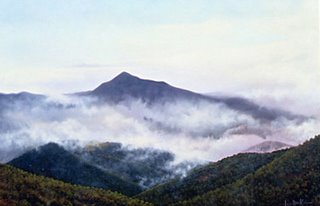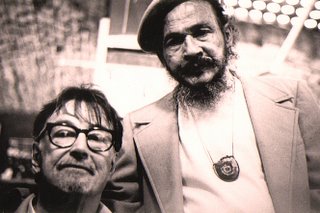
Joseph Lamb was an anomaly among the ragtime composers; the son of Irish immigrants, growing up in an environment (Montclair, New Jersey and rural Canada) totally devoid of "ragtime" culture, he somehow flourished in a musical world of his own making and rose up like an exotic flower from a sidewalk crack.
Lamb was an intuitive pianist who had little formal training. His primary exposure to ragtime was through sheet music acquired in music stores and he was greatly enamoured of Scott Joplin's compositions. Prior to age 20 he began composing ragtime tunes inspired by Joplin but with a touch of his own originality.
Lamb frequented John Stark's publishing house in Manhattan where he unsuccessfully submitted a few original compositions.
In 1909 he walked in to Stark's and, according to his own reminiscence, "There was a colored fellow sitting there with his foot bandaged up as if he had the gout, and a crutch beside him. I hardly noticed him. I told Mrs. Stark that i liked the Joplin rags best and wanted to get any I didn't have. The colored fellow spoke up and asked whether I had certain pieces which he named. I thanked him and bought several and was leaving when I said to Mrs. Stark that Joplin was one fellow I would certainly like to meet. 'Really,' said Mrs. Stark. 'Well, here's your man.' I shook hands with him, needless to say. It was a thrill I've never forgotten. I had met Joplin and was going home to tell the folks."
Joplin asked if Lamb would care to accompany him for a walk and a chat, and subsequently invited him to come by the boarding house where he was living near Times Square the following week. Lamb played him some of his pieces and Joplin was very impressed with "Sensation - A Rag" calling it "a regular Negro Rag" - the ultimate compliment for Lamb. Joplin offered to add his own name on the title page of "Sensation" as an arranger to help sell the piece to Stark and the public. This thoughtful gesture placed Lamb's foot in the door and Sensation was the first in string of his rags published in the next 10years.
Considered today as one of the "Big Three" of Ragtime composers, along with Joplin and James Scott, Lamb did little to promote himself and disappeared into obscurity at the onset of the 20's when passion for jazz began to supersede ragtime.
In his words; "I wanted to keep my music in my private
life. I didn't want to make any money on my
things. I only wanted to see them published
because my dream was to be a great ragtime
composer." He rejected any suggestions to commercialize his music wanting to remain free to express himself without compromise.
He lived the remainder of his life near Coney Island in Brooklyn, quietly raising a family of 5 children, and working as an accountant for the same import firm from 1911 until his retirement in 1957. His wife recalled nights when Joe played the piano after dinner with one foot on the bassinet rocking the baby asleep.
When there was a revival of interest in classic ragtime in the late 40's and early 50's, many thought that "Joseph Lamb" might have been a pseudonym for Scott Joplin.
Although there were similarities their styles, one notable difference was that Lamb's compositions tended to be built on 8 bar phrases as opposed to Joplin's 4.
Relying on the handwritten address marked on one of Lamb's last published pieces, revivalist
Rudi Blesh found Lamb through a Brooklyn phonebook and interviewed him. Encouraged by a newfound interest in his work, Lamb began composing again. Just prior to his death in 1960 he was visited by Sam and Ann Charters who wanted to document his work. Ann (known now for her writing on Jack Kerouac and the beat poets) played and recorded Lamb's compositions and coaxed the old man to play a number himself for posterity.

*Searching online for good representative soundclips, the best i've found is off "Perfessor" Bill Edwards ragtime site http://www.perfessorbill.com/index2.htm
The Perfessor plays Lamb's rags beautifully in an elegant style. Check out "A Ragtime Nightingale"
Especially to be avoided are renditions in the cheesey speeded-up honky-tonk style inappropriate for Lamb's rags in particular and generally toxic to an true appreciation of great classic ragtime.
























